International Journal of
eISSN: 2576-4454


Literature Review Volume 3 Issue 5
Department of Engineering and Architecture, University of Trieste University Center of Gorizia, Italy
Correspondence: Adriano Venudo, Department of Engineering and Architecture, University of Trieste University Center of Gorizia, via Bartolomeo D’Alviano 18, 34170 – Gorizia, Italy,, Tel 0481 599236 & 347 2921588
Received: September 12, 2019 | Published: October 1, 2019
Citation: : Venudo A. Landscape experiments along the Italy, Austria and Slovenia border. Int J Hydro. 2019;3(5):390-408. DOI: 10.15406/ijh.2019.03.00204
The research started from focusing on a border line that runs for 180km along the edge of 3States, 5regions, numerous landsca‒pes. Eventually, putting together the eleven visions elaborated by the working groups, an extended area of about 7000km2 was identified as the actual “region of the border”. This regions lays within a bigger cross‒border ring whose shape is defined by pieces of existing infrastructures, belonging to other systems, but representing, within the ring around the border, a “new” important infrastructure serving the territory. It also represents a functional unity, a perception system, in few words a whole structural unity for the region of the border.
Keywords: landscape, Italy, Austria, Slovenia border, geography, rhythm and fluxes, region, ecologies
Landscapes on a moving border
Apparently still, geography does instead re‒write and inform always new architectonic languages; vice versa architecture–if considered from the geographer’s point of view.1,2 Re‒shapes periodically, through scales, history of geography and its very representation, always new relations, arrangements, original texts that are the result of territorial processes. That is, in Corboz’s3 words, the codification of the palimpsest. This article summarises the findings of a research conducted by the author in collaboration with the Univeristy of Trieste’s and Faculty of Architecture of Lubljana’s workshop “Progettazione Integrata dell’Architettura e del Costruito”. The research focused on the change ongoing along the Italian, Austrian and Slovenian border in north‒eastern Italy, following the geo‒political developments of the last 20 years Figure 1.
The research had 3 main objectives: 1. Elaborating a new interpretation of architecture and landscapes, shaped on the geographic matrix of the border, in the aforementioned cross‒border region; 2. Developing a cross‒cutting dialogue on territorial models shaped on the edge between geography and architecture; 3. Designing landscape and urbanistic project proposals for cross border areas within a cross border cooperation mindset. The research area is set along the Italian, Slovenian and Austrian border of Friuli Venezia Giulia region, in north‒eastern Italy, from the mountains of Tarvisio to the Adriatic sea shore. The actual border runs for a 180km around 3 sides of the perimeter of the region, but an extended area of 7000km2 have been also included in the study site. This extended area represents a landscape unit, stratified with history and traditions of the communities that inhabit it (rhythm and fluxes), and represents a territory with a unique potential for the development of new projects Figure 2.

Figure 2 Military Geographic Institute, Official Map of the Italian State before the Peace of Paris, 1947; Source: www. italianlimes.net.
The border at stake, for known historical reasons4 and, more recently, due to geo‒morphological changes (i.e. it runs along the alpine region, where high altitude glaciers are currently shrinking due to climate change and fastly re‒shaping the morphology of the land), is defined as a “moving” border. The alpine area moves along the movement of the glaciers, and so does the border, thus yearly modifying, even so slightly, the official geo‒political maps Figure 3&4.5 To address this issue, the States along the Alpine chain (including Austria, Slovenia and Italy) have thus officially codified the concept of “moving border” and that of “instability of geological elements”, traditionally considered unchanging. This leads to the scientific acknowledgement of the instability of natural borders, one of the pillars at the base of the concept of national territory Figure 5. Will climate change reshape, beside landscape structure, also the identity of these areas?6
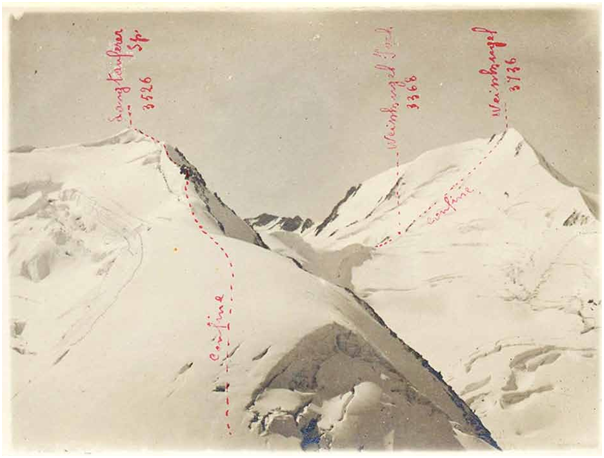
Figure 3 Military Geographical Institute, glaciers on the Italy-Austria border, 1929; Source: www.italianlimes.net.
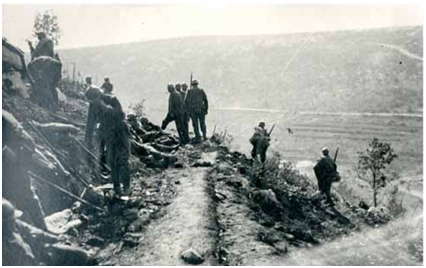
Figure 4 Images of the trenches in Doberdò del Lago, the Carso Goriziano, during the First World War, 1916.
The research was conducted in 4 phases, through survey and project tools, words and media for geographic elaboration, looking for the subtle connection between word and content, mapping and structure, territory and environment, landscape and place, shape and image Figure 6. Eleven working groups were created to work each on one of the identified themes. The work of each group was put together with that of the others to shape the new landscape’s mosaic. Eleven visions were developed, each imagining a new geography of the border. Together, they acrobatically re‒designed a new morphology of the limes, palimpsest of a multiethnic community where the remains of the history of places can write a new story between geography, landscape and architecture. These eleven visions in turn become the project making material for the overall re‒shaping of landscape. The concept of “border as landscape”6 becomes then a key to identify the geographies of this cross border region. The geographer Giorgio Valussi, between the end of 1950s and mid 1960s, conducted a series of studies on Carsic landscapes, both in Italy and Slovenia, leading him to formulate the theory of the “geography of the border”, finding its roots in the continuous changes within landscapes Figure 7&8.7

Figure 7 Regions of the Italy, Slovenia, Austria border: Friuli Venezia Giulia, Carinzia, Goriška, Gorenjsk e Obalno Kraska.

Figure 8 Elaboration of the research group of the Cross-border Region along the border. Students Kratter Lorenzo; Lesizza Giada; Bertoni Angela.
At the roots of the proposal for this “new geography of the border” lays an original research on the structure of territory (systems and functioning), on landscape layering and on an attempt to measure change (physical, ethnic, social, economic, etc.), considered as a structural element of the “moving border”. In order to map the ecologies of communities,8 eleven characters were chosen to represent the layering of the territory and of its landscapes, and their perspectives were used for mapping changes, as key indicators of the complex ongoing transformations.
These characters are:
The representation of the ecologies of change9 is embodied in eleven cartographies that together show the moving dimension of the border space. These are:

Figure 9 Elaboration of the research team (see final list of students LPI_AC 2018- 2019). Map of the ecologies of change.
This constant change of the territory, that could apparently seem an issue for territorial identity, represents indeed an element of unity (physical, morphologic, economic, ethnic, of landscape and territory, etc.) and the main character of the identity of the cross‒border region.10 This is indeed the reason behind the attempt to elaborate a “new own geography”, based on the paradigm of mutation itself Figure 10‒13.11

Figure 10 Development of the research group, students Matteo Savron, Elwira Wojcicka, Monica Bidoli. The collector, the Celestial Constellation.

Figure 11 Development of the research group, students Matteo Savron, Elwira Wojcicka, Monica Bidoli. The collector, the Celestial Constellation.
The ring for landscape border as a pre‒geography?
The research started from focusing on a border line that runs for 180km along the edge of 3States, 5regions, numerous landscapes. Eventually, putting together the eleven visions elaborated by the working groups, an extended area of about 7000km2 was identified as the actual “region of the border”. This regions lays within a bigger cross‒border ring whose shape is defined by pieces of existing infrastructures, belonging to other systems, but representing, within the ring around the border, a “new” important infrastructure serving the territory. It also represents a functional unity, a perception system, in few words a whole structural unity for the region of the border. The infrastructures taken into account for this new re‒shaping of the functionalities of the territory are highways A4 and A23 in Italy, E61 and E652 in Slovenia and A2 in Austria. Re‒interpreting the territory according to this ring structure, an original constellation of landscapes, natural systems, small centres, linear settlements and cities appears to the view and, with due care related to the still existing local and national fragmentations, they could be considered together as a whole, huge “border city” Figure 14.
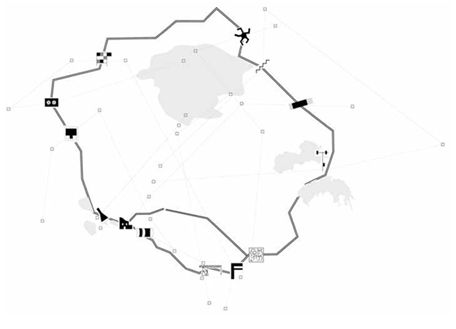
Figure 14 Development of the research team, students Matteo Savron, Elwira Wojcicka, Monica Bidoli. The cross-border ring.
Starting from the shape of the cross‒border ring, different themes were investigated Figure 15‒17:

Figure 15 Development of the research team, students Matteo Savron, Elwira Wojcicka, Monica Bidoli. Analysis of the landscapes of the transboundary ring around the border.

Figure 16 Development of the research team, students Matteo Ros, Milisa Stankovic, Enrico Vidulich. Timtable della regione transfrontaliera comparata con le principali mete europee. We are already contemplating the scenario of the hyperloop presented at the Architecture Biennale of Venice 2018.
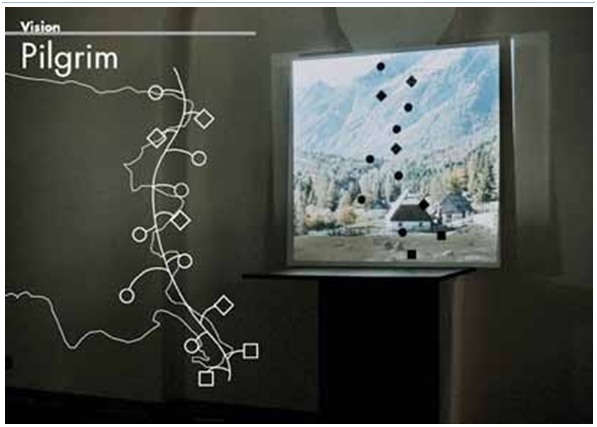
Figure 17 Development of the research team, students Caporale Giacomo. Connessioni Lente. Nuovi itinerari spirituali e di pellegrinaggio lungo il confine.
Landscape unity, natural macrosystems, environment, vegetational structures, panoramic views;
The analytical reading was elaborated with 2visions in mind:
The eleven visions elaborated (thematisms) codify the layers of the cross‒border landscape, with the aim to develop:
The study area runs across the border regions of Friuli Venezia Giulia in Italy, Carinthia in Austria and Goriška, Gorenjsk and Obalno Kraska in Slovenia. This area has, throughout history, always been a passage towards the East. The territory has always been divided among different national States, but can be considered as a whole for what concerns its “common matrix”, rooted in its identity of a cross border region.12 In the last two centuries the region was subject to great transformations, from the administrative and political point of view. These changes have left their traces on the physical appearance of the territory as well as on the communities that inhabit it. Multiethnicity has always represented the base for the mixing of cultures and local identities. The main reason behind the dynamic balance between unity and fragmentation within this region is the high level of permeability of this border, defined also as an “open border”.13 The paradigm of change lives within the very genetic heritage of this territory, both from the physical/morphologic and from the anthropological/cultural perspectives. Currently three national States (Italy, Slovenia and Austria) share this border, but the region itself is a whole macro‒region, unified by history, culture and geo‒morphology. Territorial systems overlap and shape different geographies, thus filling in the space of the border according to the “cross‒border concept”14 or to the idea of “transational cell” Figure 18.15 The natural systems of the territory at stake (Sistema Carta Natura, ISPRA) have a strong ecological and landscape unity (woods and forests, rivers, lakes, mountain ranges, glaciers, valleys, coast). The many small towns and five bigger centers (Tarvisio, Gorizia, Trieste, Lubljiana, Villach) located in this area, for historical reasons (such as re‒definition of the borders between States after the II World War) found themselves without a real territory beside the fragmented one represented by the cross border. The geographic position as gate towards the East has favored, throughout the centuries, the creation of important transport infrastructures and of the European corridors. This allowed for a direct connection with central Europe, for what concerns trade and commerce. Thus, this “informal region”, geographically located in a peripheral position, was included in a continental exchange loop, despite not being officially recognized as a whole unit from the political, administrative and economic point of view. It seems thus relevant to point out that the fragmentation and constant change that the border has always generated in this area has paradoxically given birth to a unitary territorial entity, that was also partially formalized, in the last 25‒30years, as Euroregion, Alpe Adria, Macroregion, etc., for economic, political administrative, environmental, managerial, social, landscape purposes Figure 19‒22.

Figure 18 Development of the research team, (vedi elenco finale studenti LPI_AC 2018- 2019). New geography of the border region.

Figure 19 Development of the research team, students Caporale Giacomoi. Analisi dei paesaggi, dei percorsi lenti, delle emergenze, dei luoghi di culto lungo il confine.

Figure 20 Development of the research team, students Sofia Artico, Federica ferrigno, Lara Slavec. Analysis of environmental systems and scheme of ecological fragmentation along the border.
From landscape architecture to shapes of geography
The project‒making approach towards the elaboration of a masterplan aimed at valorizing the diversities within the territory, that have always shaped the ways of life and of inhabiting,16 the settling principles at the roots of cross border cities and villages, the ways of cultivating and managing landscape, the creation of an architectonic jargon of the border.17 The masterplan investigates forms and “shapes of diversity” that are capable of enhancing unity and sense of belonging to a whole territory. The history of the city and of the territory1 remind us that great infrastructures, such as the roman aqueducts, the consular roads, the defensive structures of the Chinese Great Wall or Adrian’s Wall, the pilgrimage routes, and more recently the European corridors have always contributed to shaping unity (Figure 23‒28). However, history suggests also other means for building unity,2 for instance through the dedicated, symbolic or functional construction of bell towers, or landmarks, water tower telemetry, or the development of a “unitary vision” through great landscape and perspective rearrangements, theorized by Benevolo2 in “Cattura dell’Infinito”. The shaping of the territory, especially in the Mittel‒European area, has been understood and developed as management of change13 and historically was always embodied by landscape architecture,2 while finding its actual effectiveness (both in terms of realization and dissemination) only when codified by geography.9 Important examples to illustrate this connection throughout history are the Peuntiger Table, or the first cartographies of the territory of the Venetian Republics by Guadagnino, or the great topographic campaigns of the Austro‒Hungarian Empire or of the Italian Geographic Military Institute. Also maps and tourist guides elaborated by the Italian Touring Club highly contributed to the creation of a culture and awareness of landscapes (Figure 29‒31). Finally, it is worth also mentioning as an example the recent maps of the “future world order”, related to communication, new media and energy.18 A constant evolution of forms of the geographical space has taken place parallel to human evolution, and to the evolution of tools and methods (Figure 32&33).19
Immago limes, visions, fragments, geo_graphies
The research activity was divided in four phases. The first phase, immago limes, implied an analytical reconstruction of the territory’s structure, functioning, throughthe analysis of landscapes, systems (nature, settlements, infrastructures, etc.), fluxes, relations, historical evolution, current ongoing dynamics, obstacles/potential, through data gathering. During the second phase, visions, data were interpreted, summary models were elaborated, extended areas were identified for each segment of the border line, indicators were chosen, ecologies were defined, and thematisation was carried out through “narration”. The third phase, frammenti (fragments), implied the development of meta‒ projects concerning the overall thematisation and the identified obstacles/potential. These meta projects allowed for the focus on specific themes and places for the actual project. During the fourth and last phase, geo_graphies, all information, analytic and project elaborations and experiences were put together to elaborate the final deliverables: eleven ecologies, maps of change, border landscapes, the cross border ring, the city of the border and the new geography of the border (Figure 34&35).20‒23

Figure 34 Development of the research team, students Valentina Devescovi, Michela Contin, Lorna Matias. Cave mapping along the border and lithology analysis.
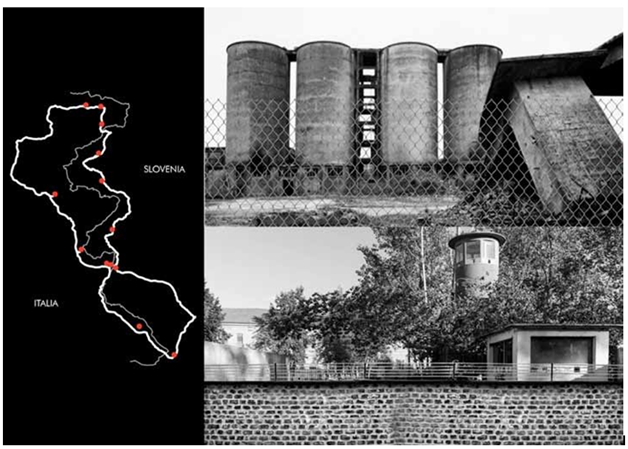
Figure 35 Development of the research team, students Vlad Martinas, Semir Skenderovic. Landscape mapping of terrain vague.
Credits of the research
Research unit: Integrated Design Laboratory of Architecture and Building, Department of Engineering and Architecture, University of Trieste (IT) with Faculty of Architecture in Ljubljana (SLO);
Research title: New geographies along the border between Italy, Slovenia and Austria Year: 2018‒2019;
Coordinator and scientific manager: Giovanni Fraziano (DIA – UNITS);
Team of researchers: Adriano Venudo, Claudio Meninno, Luigi Di Dato, Marko Verri, Stefano Simionato (DIA ‒UNITS), Spela Hudnik (Facoltà Architettura, Università di Lubiana);
Students who have collaborated on the research team: Lorenzo Kratter; Giada Lesizza giada; Angela Bertoni; Virginia Fabbro; Silvia Musini; Arianna Santarsiero; Giorgio Conforto; Eleonora Di Stefano; Debora Paulin; Sofia Artico a; Federica Ferrigno; Lara Slavec; Stela Guni; Giulia Piacente; Giulia Toscano; Vittoria Umani; Vlad Maricel Martinas; Semir Skenderovic; Ivan Bello; Jesku Franklind; Matteo Savron; Elwira Wojcicka; Monica Bidoli; Michela Contin; Valentina Devescovi; Lorna Mattias; Matteo Ros; Milisav Stankovic; Enrico Vidulich, Giacomo Caporale.
None.
The authors declare that there are no conflicts of interest.
None.

©2019 :. This is an open access article distributed under the terms of the, which permits unrestricted use, distribution, and build upon your work non-commercially.